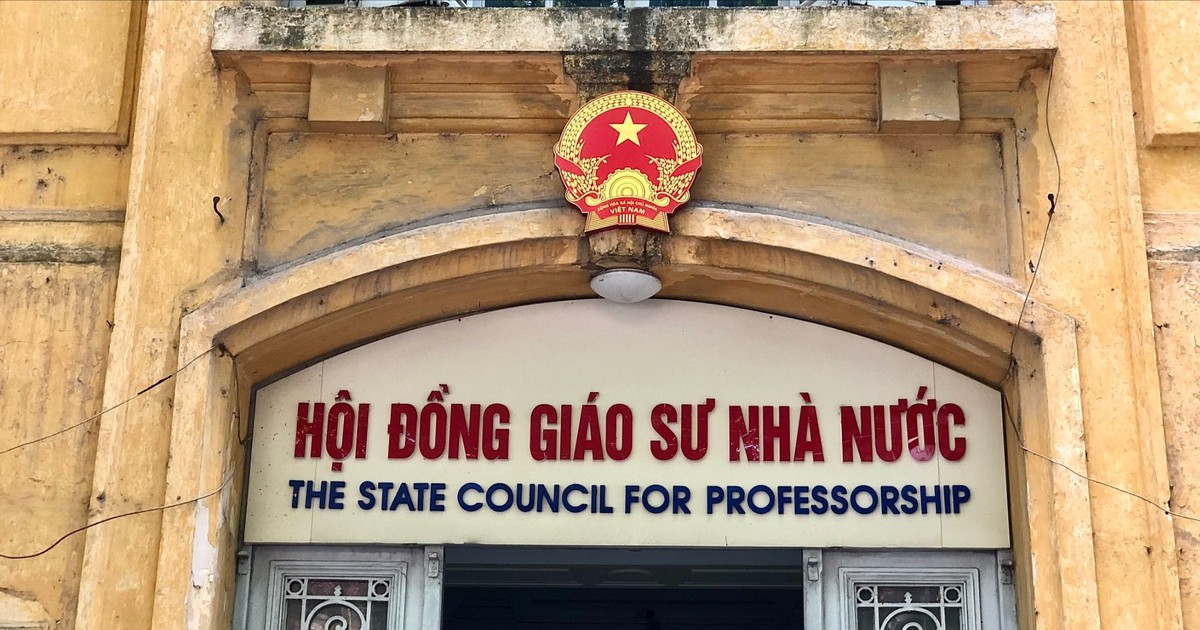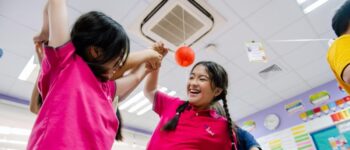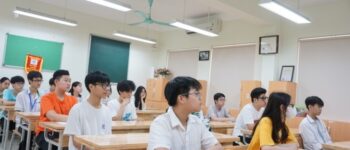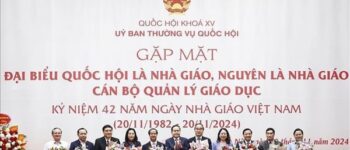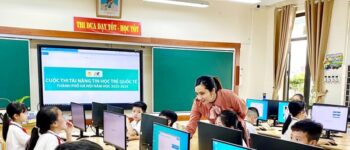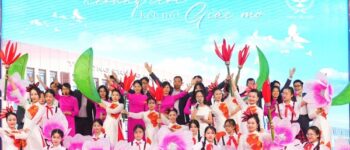Recently, a delegation from the Center for Communications and Events (Ministry of Education and Training) and some reporters had a survey of the implementation of school solidification in Yen Bai province.
- Thúc đẩy sâu sắc hơn nữa hoạt động hợp tác giáo dục giữa Việt Nam và Pháp
- Dự kiến thêm trường hợp học sinh được tuyển thẳng vào lớp 10
- Nhóm SV ĐH Phenikaa đề xuất dự án IVF cải tiến nhằm hỗ trợ các cặp đôi hiếm muộn
- Thế hệ trẻ là người tiên phong dẫn dắt Việt Nam trong kỷ nguyên AI
- Năm 2025, Đại học Bách khoa Hà Nội tổ chức 3 đợt thi đánh giá tư duy
Accordingly, the delegation visited 2 schools including Dai Dong Commune Kindergarten (Yen Binh district) and Nghia Tam Primary School (Van Chan district).
Bạn đang xem: Cần ưu đãi đất đai, miễn giảm thuế, hỗ trợ tín dụng để thu hút nhà đầu tư vào GD
Welcoming the survey team at each site were representatives of the Department of Education and Training, representatives of the Commune People's Committee and teachers at the school sites.
We hope that the solidification movement will be synchronized throughout the district
Talking to reporters, Mr. Nguyen Minh Duc – Head of Education and Training Department of Van Chan district (Yen Bai province) said: Currently, in the entire district there are 66 public educational establishments including 61 units. schools under the district, 4 junior high schools and high schools, 1 high school under the Department and 1 vocational education center – continuing education.
Up to now, units in Van Chan district have basically ensured general conditions for classrooms, meeting the criteria and conditions in implementing the 2018 General Education Program as well as Preschool Education Program.
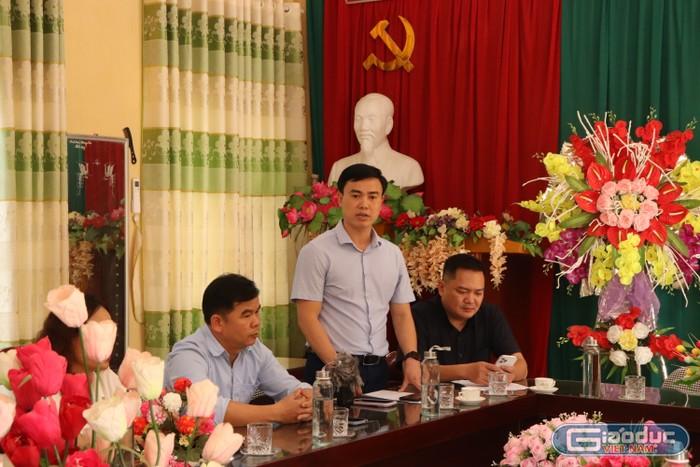
Mr. Nguyen Minh Duc – Head of Education and Training Department of Van Chan district (Yen Bai province). Photo: Dao Hien
According to Mr. Nguyen Minh Duc, in the period 2020 – 2024, Van Chan district has 76 projects to build schools and classrooms from the State budget, the total cost for these projects is 298 billion VND.
For projects from socialized sources, the district has 22 projects, the funding source is 14 billion 750 million VND.
“School solidification projects have brought many positive results in improving the quality of teaching and learning in Van Chan district.
For the period 2025 – 2030, according to the medium-term investment plan, the Department of Education and Training is also submitting to the District People's Committee an investment plan for 32 projects with a total cost of 178.9 billion VND.
In addition to the two main sources, “new rural construction program” and “project for developing ethnic minority and mountainous plains”, additional funding sources from the province as well as counterpart funds from the district will be combined. .
At the same time, the entire district will continue to promote organizations and businesses to support the construction of more classrooms, function rooms and auxiliary works for school units.
At a number of retail schools in the district, we hope that in the coming time we will receive attention and investment from units so that the movement to solidify schools and classrooms will be synchronized throughout the district.” Mr. Nguyen Minh Duc informed.
According to the report on the current situation and socialization work on investment in construction and solidification of schools, classrooms, and public houses for teachers in the period 2013 – 2023 of the Department of Education and Training of Yen Bai province shows that, in In recent years, general education in Yen Bai province has had positive changes such as the scale, network of schools and classes arranged to suit each locality.
Specifically, the quality of mass education, spearhead education, and ethnic education is maintained and gradually improved. The rate of student enrollment increased and the dropout rate decreased, contributing to maintaining and improving the quality of universal education and eliminating illiteracy in a sustainable way.
Besides, the rate of national standard schools increased rapidly; The team of civil servants and public employees is streamlined, streamlined, and effective; School facilities continue to be invested in effectively and gradually modernized, meeting the requirements of management innovation and teaching method innovation.
Xem thêm : Lễ phát động ngành Giáo dục ủng hộ đồng bào bị thiệt hại do bão số 3
Socialization, study promotion, and talent promotion work achieved many results. The work of building a learning society is also given attention and direction.
According to statistics, in 2013, Yen Bai province had 6,069 classrooms at preschool, elementary, middle, and high school levels, of which the number of solid classrooms was 4,115 (reaching a solid rate of 68 %). By 2023, the whole province has 6,871 classrooms at preschool, elementary, middle, and high school levels, of which 6,026 are solid classrooms (reaching a solid rate of 87.7%).

Summary table of data according to the report of Yen Bai Department of Education and Training. Performed by: Dao Hien
Sharing experiences and solutions for mobilizing socialization, the Department of Education and Training of Yen Bai province said it has mobilized capital sources from contributions and sponsorships of businesses, organizations, individuals and other organizations. other legal capital sources.
Accordingly, the Department has integrated capital sources to implement investment projects, activities, and content with the same goals and in the same commune and district level areas to ensure that goals and tasks do not change. service of each project.
Besides, focus on focused investment, avoiding spreading and wasting in capital use. Clearly assign and decentralize the responsibilities of agencies and units to preside and coordinate in implementing the integration of capital sources.
In addition, for socialization to be most effective, local party committees and authorities need to be aware of the position and importance of education. Thereby, there is high attention and proper investment, to create the best conditions for schools to operate.
The implementation process needs to develop plans in each phase, assign responsibilities to each department according to the correct functions and powers, have inspection and supervision, ensure on schedule and achieve efficiency. On the other hand, it is necessary to carry out propaganda, advocacy, and support from organizations and individuals inside and outside the province well.
According to the draft report summarizing the socialization work on solidifying schools, classrooms and public houses for teachers in the period 2013 – 2023, tasks and solutions in the coming time (as of October 18, 2023). 2024) of the Ministry of Education and Training stated: Over the past 10 years, the Ministry of Education and Training has chaired and coordinated with ministries and branches to develop and submit to the Prime Minister for approval Programs and Proposals. project to support disadvantaged localities to strengthen their facilities.
For example, the project to solidify schools, classrooms and public houses for teachers in the period 2008 – 2012 (with a total estimated budget of about 34,888,426 billion VND); Project to solidify schools, classrooms and public houses for teachers in the period 2014 – 2015 and roadmap to 2020 (with a total estimated budget of 2,000 billion VND); Target program for education in mountainous areas, ethnic minority areas and disadvantaged areas for the period 2016-2020; Project to ensure facilities for the Preschool Education and General Education programs for the period 2017-2025,…
In addition to the state's efforts, social mobilization also plays a huge role in investing in perfecting school and classroom facilities. In particular, the Project to solidify schools and classrooms through the periods from 2008-2012 and the Project to ensure facilities for preschool and general education programs in the period 2016-2020, socialization sources for Supporting investment in building school and classroom facilities is about 4,200 billion VND, equivalent to nearly 7,000 classrooms.
Localities have paid attention to strengthening physical facilities in the direction of solidifying, standardizing and gradually modernizing, eliminating 3-shift classrooms, degraded classrooms, temporary classrooms, and priority classrooms. for maintaining universal 5-year-old preschool education and universal primary education.
The physical facilities of educational institutions have had positive changes, localities have prioritized investment in enhancing items such as classrooms, function rooms, and teaching equipment. The basic number of students/class is implemented according to regulations. Many localities have paid attention to implementing solutions to ensure convenient and safe travel for students when going to school.
Solutions to attract socialization and contribute to education
Also according to the Ministry's report, in the past 10 years, although the State has paid attention to investing in many programs and projects in the field of education and training in general, due to the large number of schools, spread across the country. , the general state budget investment in education and training is still limited, so the facilities at preschool and general education establishments are still unsatisfactory.
In general, recent programs, projects and investment schemes have only partially supported the lack of facilities for some schools in difficult areas with underdeveloped economic conditions. but has not completely resolved the solidification situation as well as failed to ensure minimum conditions for educational activities at preschool and general education establishments throughout the country.

Investment projects in recent times have only partially supported schools in difficult areas. Illustration photo: Dao Hien
Xem thêm : Tăng mức độ phân hóa đề thi tốt nghiệp THPT từ năm 2025
Accordingly, the majority of preschool and general education establishments only have regular classrooms, and many buildings in the learning service block are lacking (subject classrooms, libraries, multi-function houses). , administrative management, playground, sports ground, administrative area, administration,…).
In some localities, there are still temporary classrooms and lack of functional rooms. Classrooms in many localities, especially disadvantaged areas, lack space, sanitation facilities, and clean water. Kitchens in many localities are still very lacking or not arranged properly, seriously degraded, and the area of playgrounds and training grounds is limited.

Temporary classroom row at Nghia Tam Primary School (Van Chan, Yen Bai). Photo: Dao Hien
On that basis, the Ministry also points out practical solutions to overcome existing limitations.
Firstly, it is necessary to strengthen propaganda to raise social awareness about the need to contribute to education.
Communication campaigns need to aim at calling for the active participation of all classes of people, businesses and social organizations in the process of improving educational facilities. Communication needs to be done through many forms such as television, social networks, seminars, and meetings at schools.
Second is to improve institutions and support policies. Accordingly, it is necessary to review and update legal regulations related to educational socialization to ensure compatibility with practice. Documents such as the Education Law and Decree 69/2008/ND-CP need to be adjusted to create more favorable conditions for mobilizing resources from society.
On the other hand, the Government needs to issue specific support policies to promote investment in difficult areas such as the Northern Mountains, Central Highlands and Mekong Delta. These policies need to focus on land incentives, tax exemptions and credit support to attract investors to build educational facilities.
Third is to strengthen the socialization of education through promoting public-private partnership (PPP) models to attract resources from the private sector to build and manage schools.
The government needs to create a clear and favorable legal framework so that private businesses can participate in educational projects. This not only helps reduce pressure on the state budget but also improves the quality of education thanks to innovation and specialization from the private sector.
Fourth, it is necessary to increase investment from the state budget. The government needs to continue to allocate budget for projects to improve educational facilities, especially in remote and disadvantaged areas. These investments should be prioritized for the construction and renovation of classrooms, restrooms, and other functional rooms.

Fifth, review and readjust the planning of the network of educational institutions, ensuring compliance with socio-economic development conditions and actual learning needs. This will help avoid overcrowded schools or excess facilities in unnecessary areas; Rearrange small-sized, low-performing schools in scattered residential areas, thereby optimizing the use of resources for education.
Sixth, improving the quality of construction and facility management ensures that projects are built with the right quality, meeting the requirements for long-term use and safety.
Develop a plan to regularly maintain and upgrade facilities to prolong their lifespan and improve efficiency; Implemented synchronously with strict management from school level to local management agencies.
Finally, it is necessary to apply information technology to improve the efficiency of school facilities, monitor usage and maintenance status, and forecast future investment needs. Asset management software and remote monitoring technology need to be applied to ensure transparency and optimize facility management.
DAO HIEN
https://giaoduc.net.vn/can-uu-dai-dat-dai-mien-giam-thue-ho-tro-tin-dung-de-thu-hut-nha-dau-tu-vao-gd-post246434.gd
Nguồn: https://dut.edu.vn
Danh mục: Giáo Dục
